For those who are new, or not so new, to the world of spirits and in particular Irish Whiskey there can be a bewildering new language to learn. I’ve done my best to make it a touch easier to understand below and if I’ve missed any let me know.
Irish Whiskey sales are growing here in the US at a dramatic rate with 2021 seeing an increase of almost 14% over 2020. With those numbers Irish Whiskey is attracting many new buyers to it and that brings a learning curve of sorts when it comes to how Irish Whiskey is labeled. The Irish Whiskey Act of 1980 states “Irish Whiskey must...
Be distilled in Ireland - the island of Ireland
Be distilled from a mash of cereal grains
Be distilled to less than 94.8% abv/189.6 proof
Be distilled so that the distillate has an aroma and flavour derived from the materials used
Be stored in wooden casks - that are not to exceed 700 ltrs./185 US gal. - in Ireland for no less than 3 years”
And in addition, the Food Industry Development Division of the Irish Department of Agriculture (last updated October 2014) has outlined more specific requirements which we'll reference below. We'll start off with the four legally defined styles of Irish Whiskey (and one not so well defined) and then look at some of the new labeling terms that have evolved as the modern renaissance of Irish Whiskey continues;
Pot Still (Irish) Whiskey / Irish Pot Still Whiskey: This is required to be produced using a mash, or mash-bill, containing a minimum of 30% malted and a minimum of 30% unmalted barley. The remainder of the mash can be made up of either malted or unmalted barley, and can include up to 5% of other unmalted cereals (wheat, oats, rye, or corn.) This style of whiskey is generally batch distilled in pot stills and is traditionally, but not always, triple distilled in a pot still of the distiller’s choosing. The addition of the word "Single" means that the whiskey was produced in a single distillery. The requirement to use both malted and unmalted barley in the mash bill is unique to Ireland and its use dates back to the late 1700's when an excise tax was imposed on the use of malted barley.
*Update 8 April 2022 - There are likely to be changes to the above definition of Pot Still Whiskey in the near future - READ MORE HERE
Malt (Irish) Whiskey / Irish Malt Whiskey: Irish Malt Whiskey must be made from 100% malted barley, and the wort must be separated from the solids before fermentation. In addition, it must be distilled in pot stills. Traditionally, smaller pot stills (not a requirement) are used to encourage more complex flavours and a fuller mouthfeel. While double distillation is allowed traditionally most Irish Malt Whiskey is triple distilled. The addition of the word Single means that the whiskey has been produced at a single distillery.
Grain (Irish) Whiskey / Irish Grain Whiskey: This whiskey is produced from a mash bill that can contain a maximum of 30% malted barley and the remainder is made up of unmalted cereal grains - barley, oats, wheat, or corn. Importantly, this type of whiskey is continuously distilled in a column still. Irish Grain Whiskey is most commonly used in blends but with that being said we are starting to see more Grain Whiskey being released by distilleries in Ireland. The addition of the word Single means that the whiskey has been produced at a single distillery but will likely have more than one grain in its mash bill!
Blended (Irish) Whiskey / Irish Blended Whiskey: This is the most common labeling term seen on Irish Whiskey and is a blend of two or more whiskey types from the three above. To achieve the desired or "house-style" in terms of flavour and brand consistency, whiskeys in Blended Irish Whiskey that go into the final blend can be chosen from different distilleries, be of different ages, and have different cask finishes. On the label that is often referred to as "Traditional Irish Whiskey."
Irish Whiskey: While not specified in detail in the Technical File this term serves as a “catch-all” for whiskeys that are made in Ireland and follow the basic rules that govern Irish Whiskey. This has the potential to allow for innovative mash bills in addition to allowing for distillation in either a pot still, column still, or both!
Triple Distilled: Triple-distilled Irish Whiskey must be distilled three times, usually in copper pot stills. As a result, it's a more expensive process than either double-distillation or continuous distillation. Triple distillation concentrates not only the alcohol, but also lighter, fresher, more fruity, and floral flavors in addition to some spice characteristics. Not all Irish Whiskey is triple-distilled.
Cask Finished: An unregulated term that is being seen more and more on Irish Whiskey labels as distilleries in Ireland experiment with finishing their whiskeys in different casks or barrels. Using casks of different origins for the final few weeks or months before a whiskey is bottled adds subtle flavour characteristics that differ from the cask that the whiskey was originally stored in. This term has many derivations that can include fortified wines (Port, Sherry, Madeira, Malaga, Marsala), distilled spirits (Bourbon, Cognac, Armagnac, Scotch, Canadian Whisky, Rum), geographical terms (Caribbean), brewed products (IPA, Stout, Cider), and table wine from wine-producing areas (Bordeaux, Napa Valley, Rioja etc.)...or combinations of any of the above, and even in conjunction with virgin casks. The combinations are almost endless...
Small Batch: There is no legal definition of small-batch, but it is generally used when a distiller/brand hand selects a small number of casks that are bottled in small batches and often as one-off bottlings.
Peated: While Scotch Whisky is known generally for its peaty aromas and flavours through the use of peat fires to stop the malting of the barley a small number of Irish Whiskeys are now being produced in this style. The word "Peated'' is added to the style of whiskey above i.e. "Peated Single Malt Irish Whiskey."
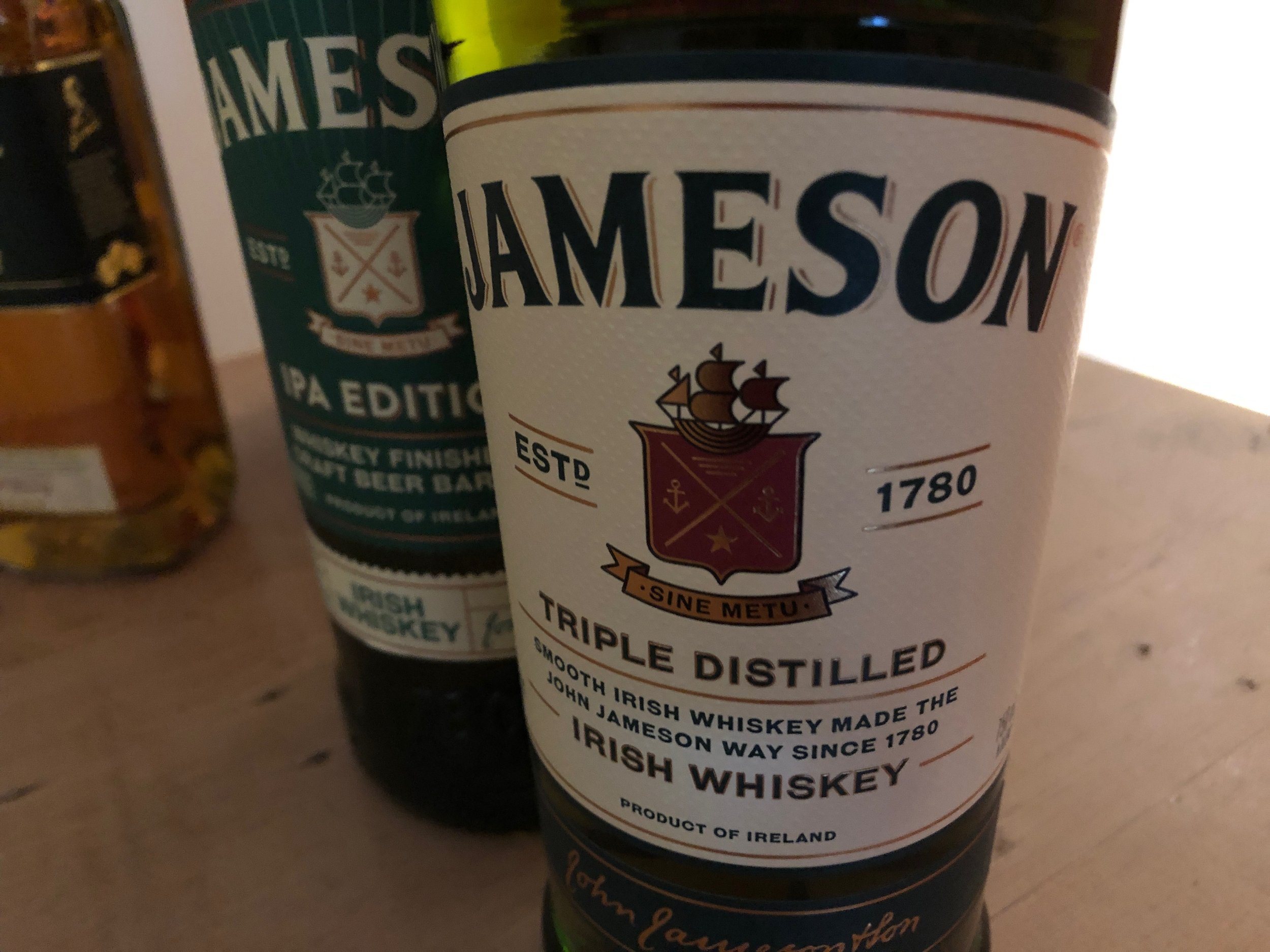
Jameson Triple Distilled Irish Whiskey
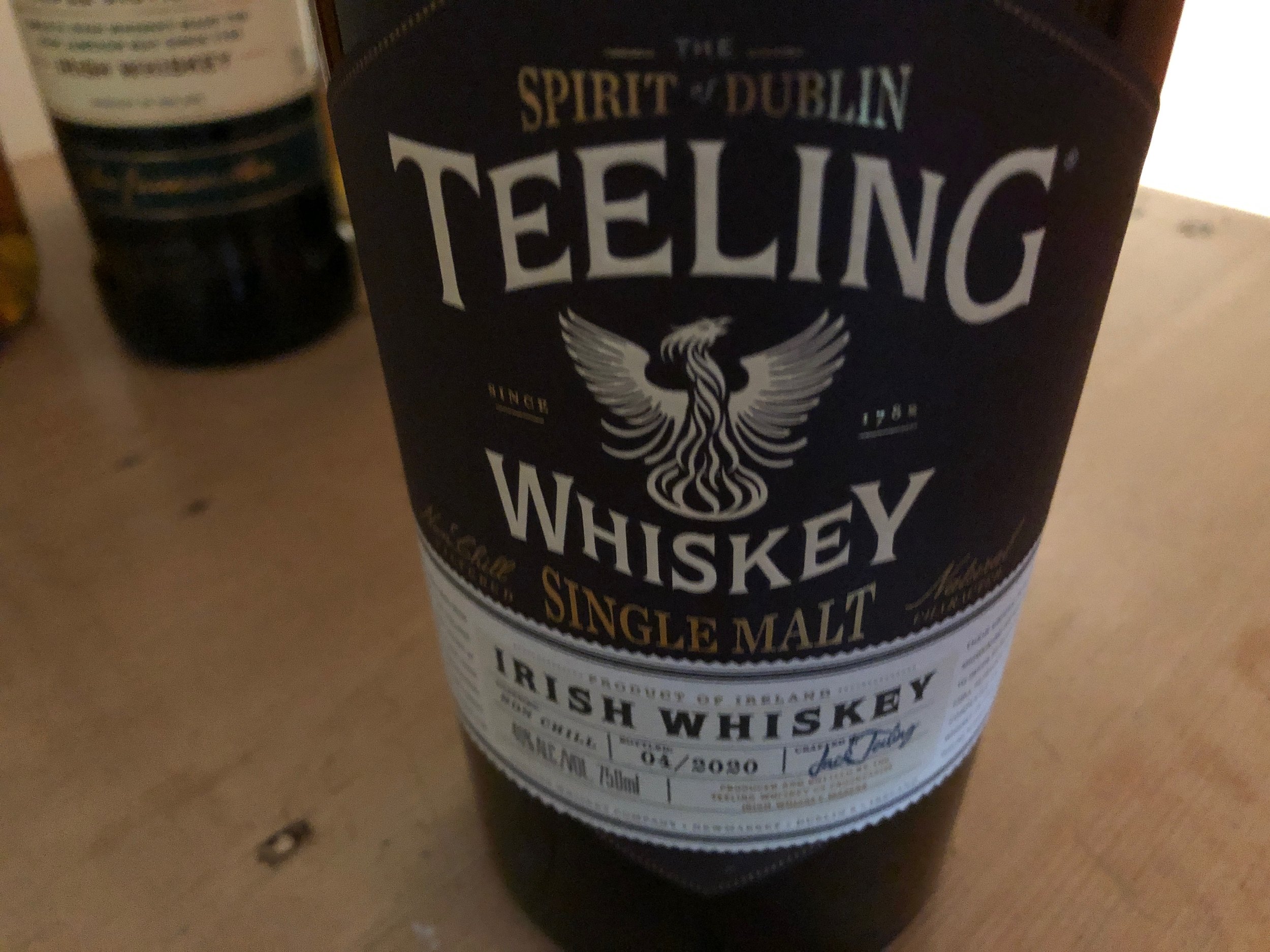
Teeling Single Malt Irish Whiskey
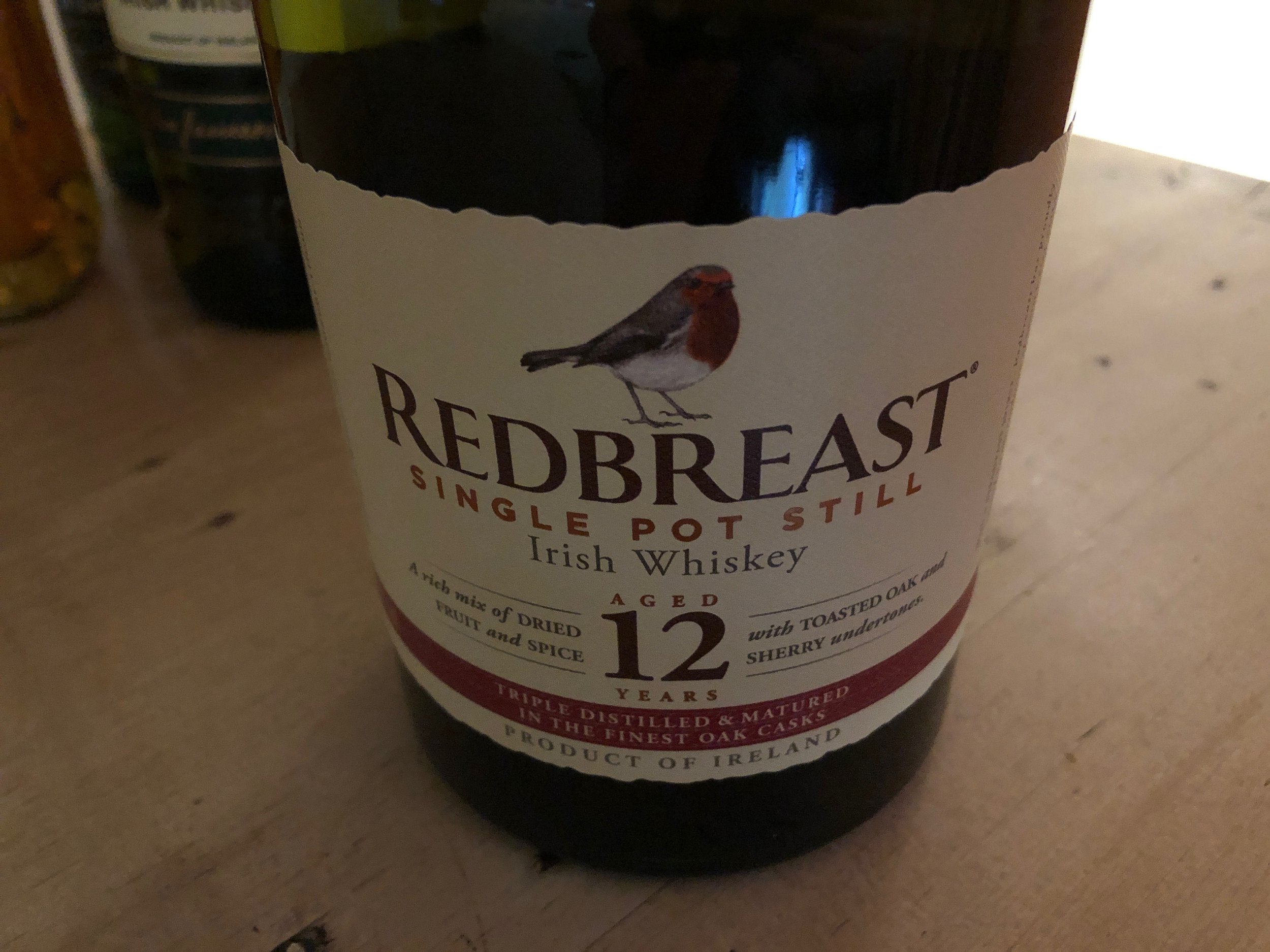
Redbreast 12 Year Old Single Pot Still Irish Whiskey
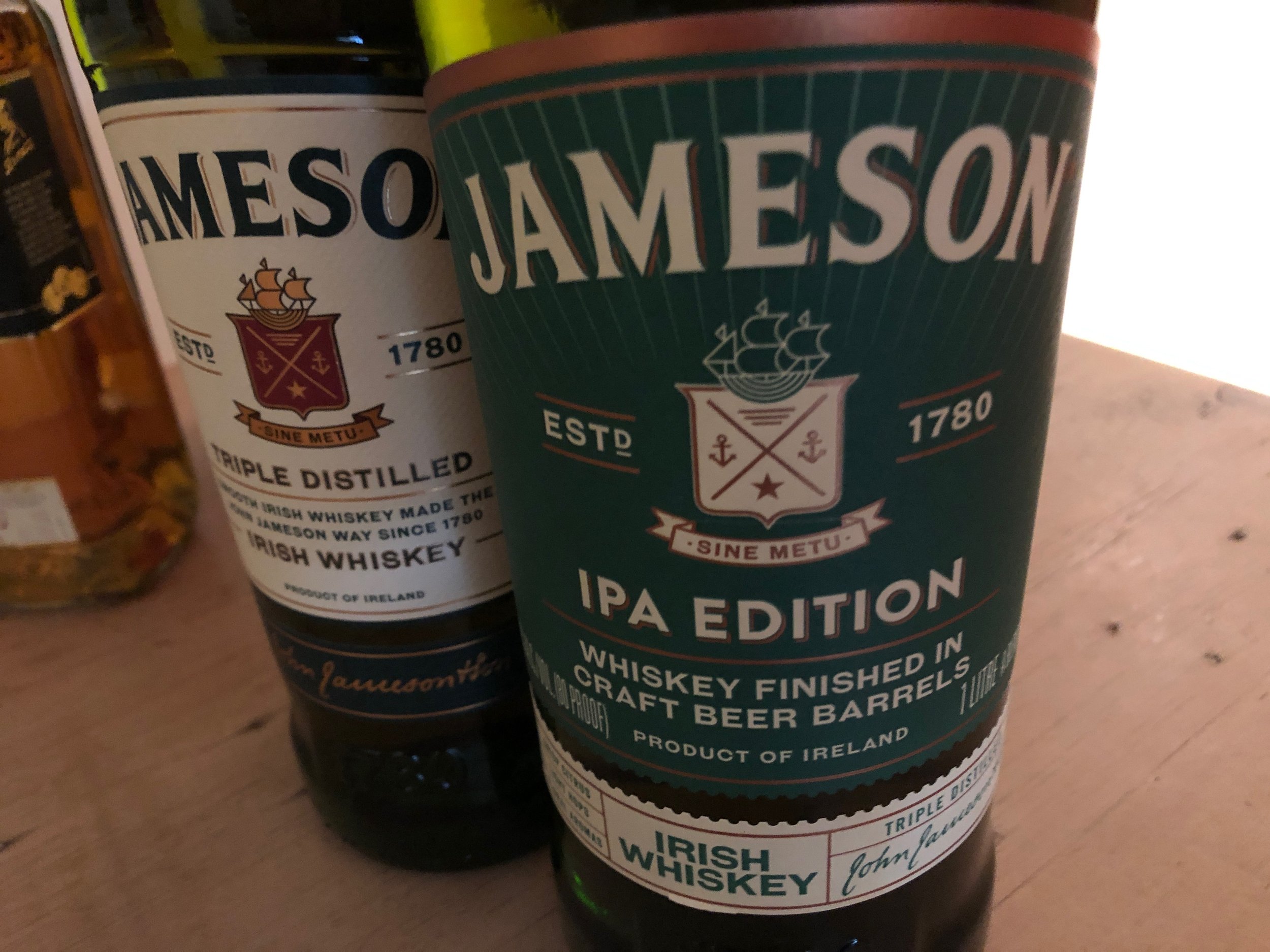
Jameson Irish Whiskey IPA Edition - Finished in IPA Barrels
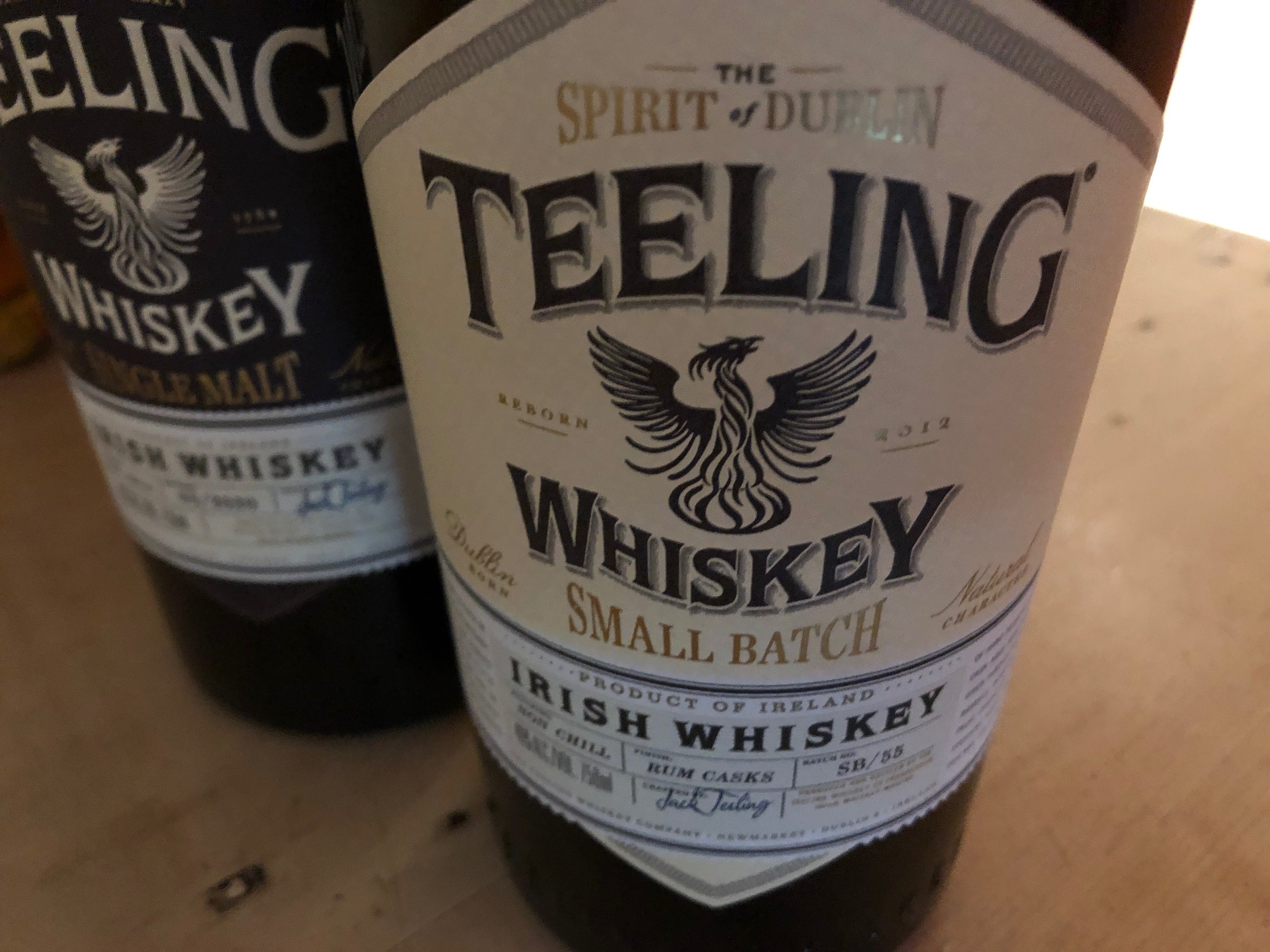
Teeling Small Batch Irish Whiskey
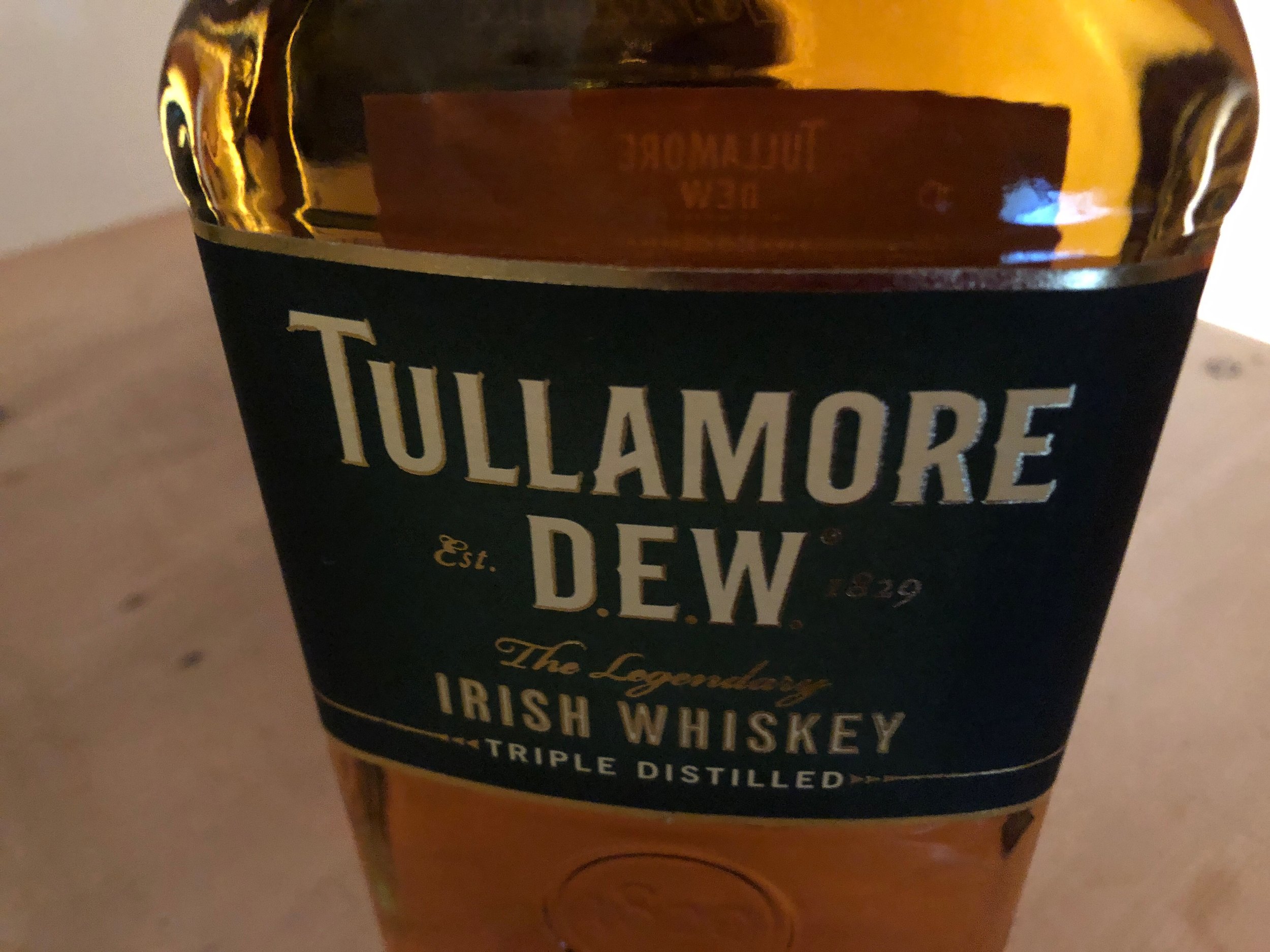
Tullamore DEW Triple Distilled Irish Whiskey


